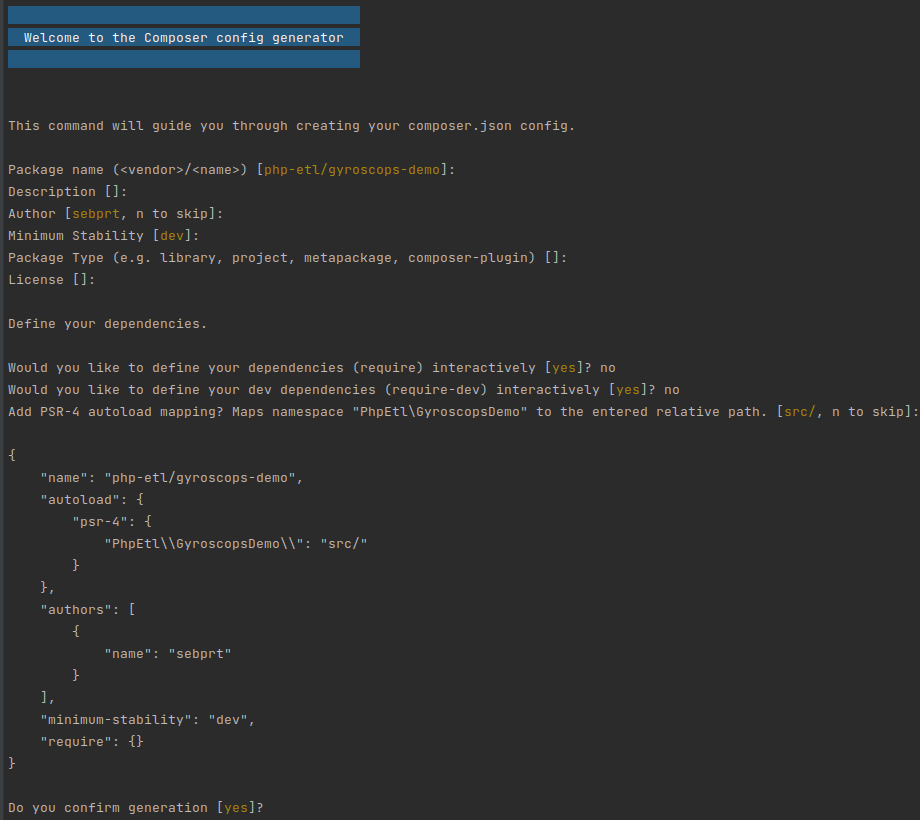Starting from here we will work inside a project directory we will name my_project_directory.
mkdir my_project_directory && cd my_project_directory
Once the project dir is created and you have changed your current directory to it, the first task will be to initialize a composer project inside this directory and add all required dependencies.
composer init

In the auto-generated composer.json file, add the following lines at the end :
{
// ...
"config": {
"bin-dir": "bin"
},
"scripts": {
"post-install-cmd": [
"Kiboko\\Component\\Satellite\\ComposerScripts::postInstall"
],
"post-update-cmd": [
"Kiboko\\Component\\Satellite\\ComposerScripts::postUpdate"
]
}
}
Now, your environment is ready for the satellite compiler installation. The following command will install it.
composer require php-etl/satellite:'*'